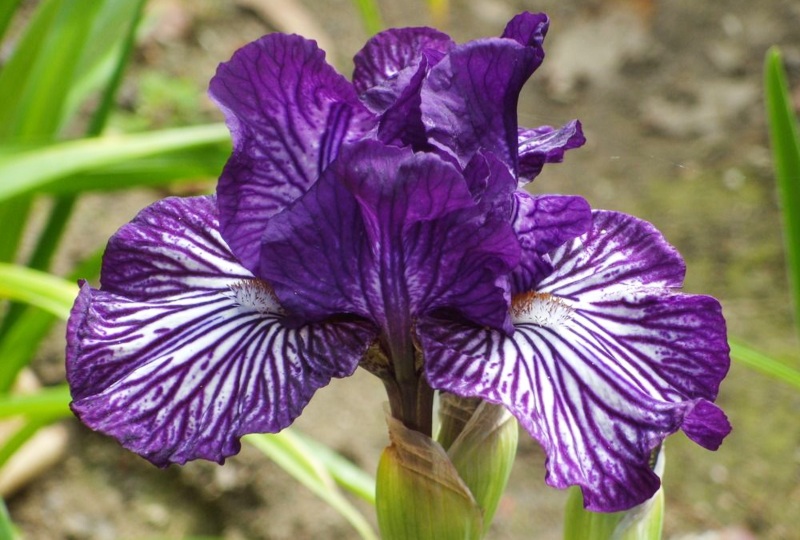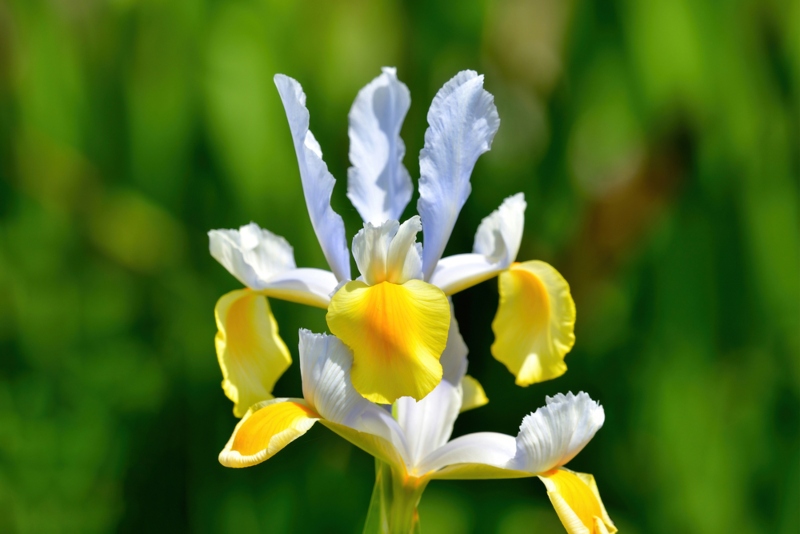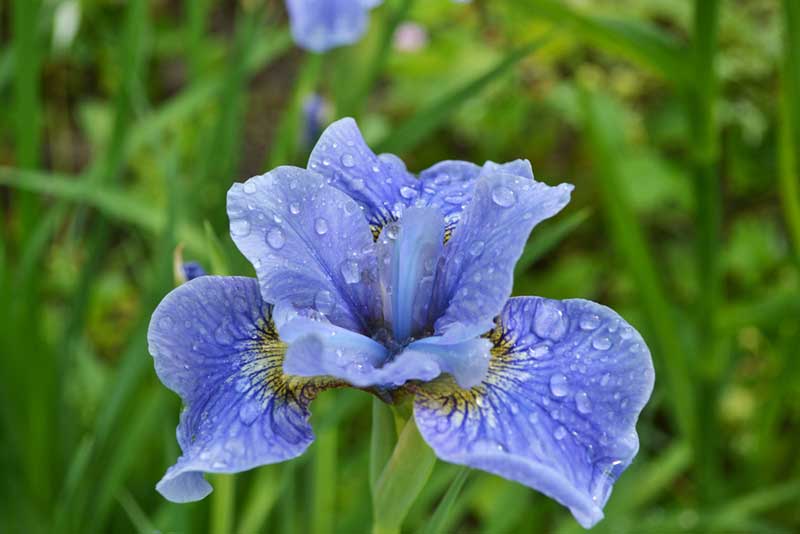
It can be very challenging to choose between the different varieties of irises. Settlers brought the first irises to Virginia in the 1600s, but Americans love for these flowers began following Michael Foster and William R. Dykes’ work in the late 1800s.
Almost all iris plants have three petals, which some believe stand for faith, wisdom and valor.
In the United States, the most common iris is the bearded iris, which experts divide into six different classes. Considering the class and other irises’ characteristics can help you choose the best one for your flowerbed.
Tiny Titan Iris

The Tiny Titan Iris is an orange iris with orange striations over its petals and an orange beard. This iris is an excellent choice for planters because it grows to be only about 8-inches tall. It also can make a great addition to a rock garden. It needs at least six hours of sunlight daily. Water it deeply when planting it in the fall, and watch this option blossom in the early spring.
Caprice Iris

If you love the fragrance of grape juice, then the caprice iris may be perfect for you. This purple iris prefers neutrally balanced soil that is kept evenly moist. Once established, it will withstand some dry conditions. Each of the falls has some white lines near where they join. The beard on this option that grows to be about 24-inches tall is purple.
Along the Lines Iris

Along the Lines iris is a dwarf iris that has bright blue lines on its white petals. It also has bright blue striations over its petals and an orange beard. This iris that seldom grows over 18 inches tall thrives in flowerbeds. You can also use it as a border plant. If Along the Lines does not get at least six hours of sunlight daily, it will not bloom. This option needs good watering when you plant it in the fall and when it is blooming.
Deja Voodoo Iris

The slightly ruffled standards, falls and style arms are deep purple on the Deja Voodoo iris. This option has bright yellow arrowheads, with each of the multiple segments being outlined in purple. A few of these irises may also have limited yellow on their standards. This choice is a medium-size iris that loves the sun. This Louisiana iris member has no beard. While it prefers well-drained soil, it can handle damper conditions than many other choices.
Red Hot Chili Iris

The Red Hot Chili Iris gets its name from its sweet, slightly spicy fragrance. The petals on this option are a bright yellow surrounded by a rusty red dotted edge. This sun-loving plant has a yellow beard. Expect this one to start blooming about the end of spring. This option is more tolerant of dry conditions than many other options. Plant this choice in well-drained, organically rich soil and watch it grow to be about 18-inches tall.
Abbeville Red Iris

Also called Iris nelsonii, if you are looking for an iris that will thrive in swampy conditions, consider this red iris. Unlike most irises, this one has six spoon-shaped petals that are fuchsia in color. This plant grows to be about 36-inches tall. Be sure to keep this plant watered regularly during the growing season.
Protocol Iris

The Protocol iris grows to be about 23-inches tall. This mid-summer bloomer has bright yellow fall petals and white standards. The fall petals are slightly darker in their middle than around their edges. This option has a cadmium yellow. Planting this option in the full sun will produce the brightest and fullest blooms. This plant prefers to be watered when you plant it and while it is blooming.
Open Sea Iris

If you are looking for a tall specimen iris, consider the open sea iris. This option that grows to be about 47-inches tall is aptly named because it is blue all over. Each of the petals has a beautiful ruffle around the edge on this big boomer. This iris is the perfect option when looking for something that will liven up a space in the late summer. Plant it in organically rich soil that drains well. Due to its size, you are likely to find that this option takes more water than other irises.
Seeds of Peace Iris
You are sure to love the Large velvety purplish-black flowers on the Seeds of Peace iris. This Oncocyclus iris that is originally from Israel thrives in sandy or poor soil. This early summer bloomer needs long-dry summers and cold winters. This option does best when it is hand pollinated. Be sure that the area you choose to plant this option in drains well because it is susceptible to root rot. If your environment gets a lot of rain in the summer, mix the soil with lime or gravel before planting.
Iris Korolkowii Regel
The Iris Korolkowii Regel is a unique iris from the Middle East. This iris has two to three falls that give the flower its elongated shape. Each of the falls is white with vivid purple lines running through them. The lines meet where the fall joins the stem. This option also has long sword-shaped green leaves, making it a beautiful plant even when it is not blooming.







